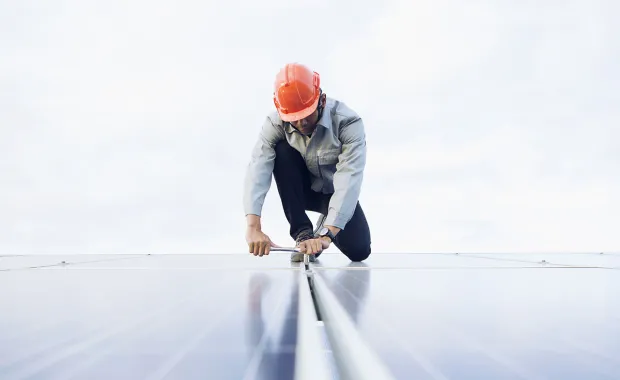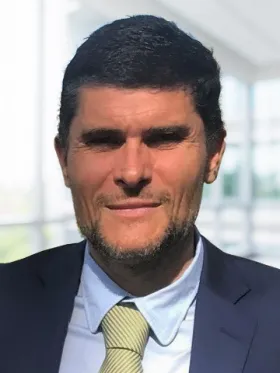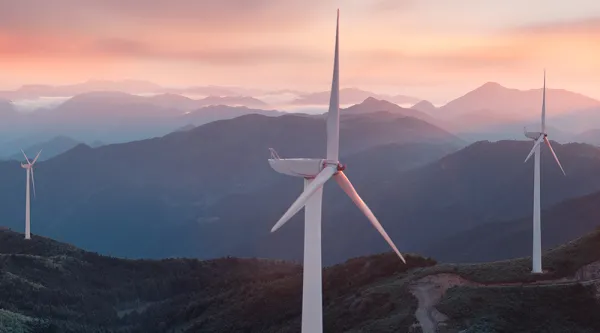IoT, data analytics and artificial intelligence are allies in the journey
Immersed in the energy crisis triggered by the Russian invasion of Ukraine, this is a critical moment for the European Union (EU) to advance the energy transition. It is a challenge where new technologies—especially the Internet of Things (IoT), data analytics and artificial intelligence (AI)—are protagonists in finding the solution.
In the CGI Voice of Our Clients interviews with energy and utilities executives, 77% of digital leaders (those producing expected results from their digital strategies) consider environmental sustainability to be core in creating future value for stakeholders. This is well above the 55% average for digital leaders across all sectors. Additionally, the energy transition is the top business priority for energy and utilities executives overall.
Accelerating clean energy
The energy transition is urgent. With fuel prices on the rise, and gas supplies at a crossroads, the development and optimal use of renewable energy, already a priority for the EU, is crucial.
In line with the Paris Agreement, ratified by Europe and Spain in 2016 and 2017, respectively, the EU presented in 2016 the proposal "Clean energy for all Europeans.” Also known as the "winter package," this proposal established the regulatory framework to achieve a series of objectives in 2030, including the reduction of greenhouse gas emissions (GHG) by 40% compared to 1990, where renewables reach 32% of total energy consumption; improve energy efficiency by 32.5%; and achieve 15% of electrical interconnection of the Member States.
The European Green Deal, or European Green Pact, presented at the end of 2019, also affects the promotion of the energy transition with the development of clean energy and contemplates achieving a climate-neutral EU in 2050.
In response to the EU’s requirements, Spain’s Ministry of Ecological Transition and Demographic Challenge sent the European Commission (EC) the National Integrated Energy and Climate Plan 2021-2030 (PNIEC), which establishes the objectives of reducing GHG emissions, as well as advancing the development of renewables and energy efficiency.
Along the same lines, in May 2021, the Law on Climate Change and Energy Transition was approved, which sets the objective of reducing Spain’s GHG emissions by at least 23% by 2030 compared to 1990. For this, it is intended that renewable energy make up at least 42% of energy consumption, and that the electricity system have 74% generation from such energy.
Enabling smart inspection of photovoltaic plants
In this scenario, solar photovoltaic energy continues to grow. For Spain, data from the electricity system operator, Red Eléctrica de España (REE), renamed Redeia, shows that photovoltaic power could reach 17 GW by the end of 2022. Photovoltaic power has doubled in installed capacity in the last four years and could surpass hydroelectricity as the third largest source of electricity by installed capacity by the end of the year. The top two sources are wind power and combined cycle plants.
At CGI, we help energy and utilities companies increase their renewable energy development. In the case of large photovoltaic plants in Spain, for example, we provide advanced maintenance systems with tools to monitor and guarantee the correct performance of each panel. The solution combines drones, or “flying IoT,” and artificial intelligence (AI) to reduce mandatory plant inspections from weeks to days, reducing maintenance costs and adding intelligence for decision-making.
Combining drones and AI reduces mandatory inspections
of photovoltaic plants from weeks to days.
A first audit drone flight is carried out when the plant comes into service to create a geo-referenced map of the panels. From this, future inspections can be carried out autonomously. Thanks to the neural networks embedded in the drones, it is possible to detect patterns of problems, failures or anomalies in a verification flight. The drone is controlled to descend at low altitude and take photographs (RGB + IR) of the affected panel to adopt the optimal decision.
The analysis is done in real time. At the end of the flight, the company maintaining the plant has a detailed report identifying the type of fault, failure or incident of each panel. The solution also provides a dashboard showing detailed information on the inspections carried out in recent years for the plant, or set of plants.
A dashboard shows detailed information on the inspections carried out.
The solution continues to evolve to incorporate predictive analytics and determine, among other things, the economic impact of different failures or breakdowns on production.
Advancing sustainability
The energy transition requires new investments and business models that allow companies to face growing competition and stakeholder pressure to decarbonize, digitize and increase sustainable production. CGI combines our in-depth knowledge of the trends, challenges and priorities of the energy and utilities industry to help clients overcome challenges and take advantage of opportunities associated with sustainability. Learn more about how CGI can support you on your energy transition journey.






